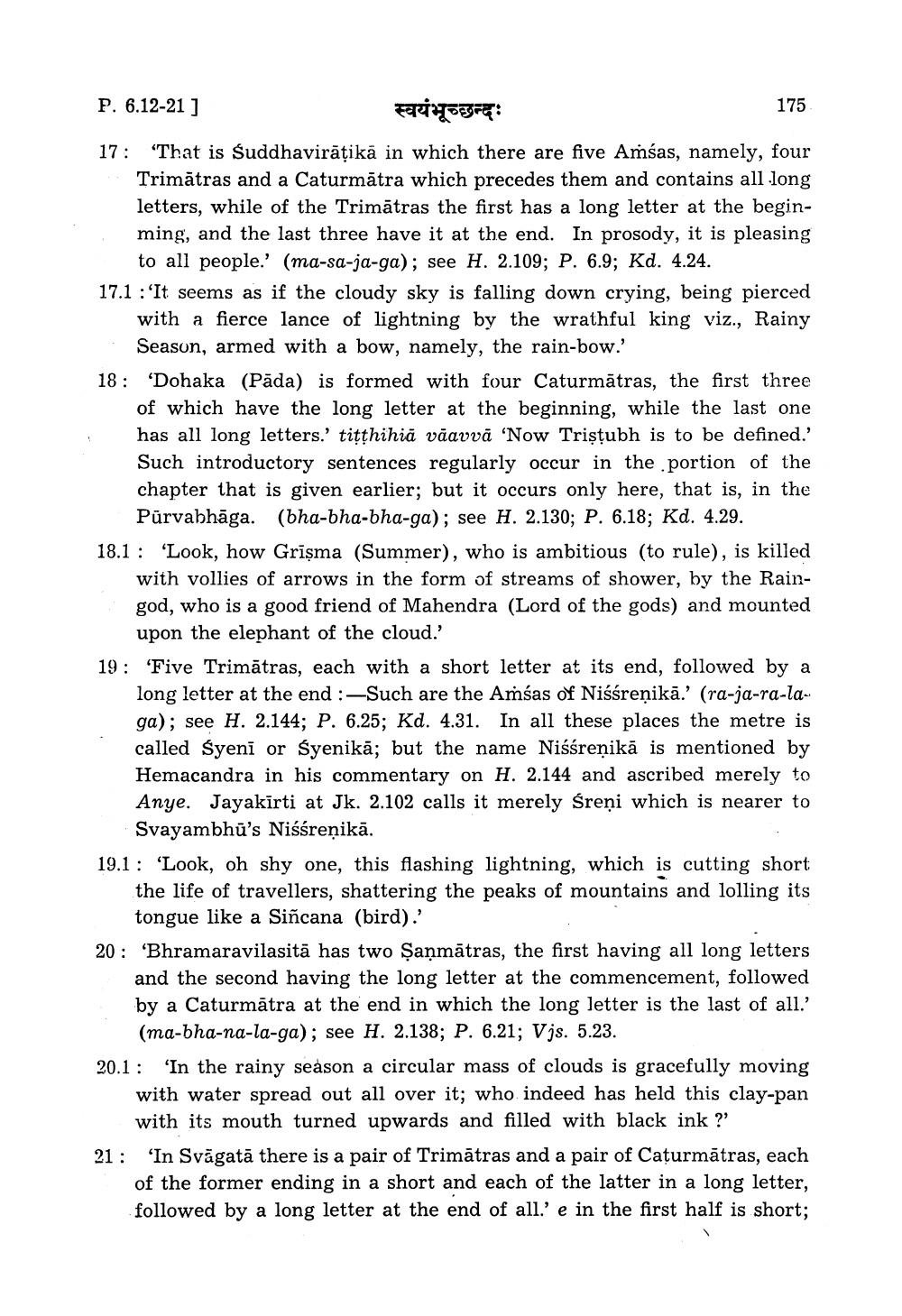________________
P. 6.12-21 ]
स्वयंभूच्छन्दः
175
17: 'That is Suddhavirātikā in which there are five Ambas, namely, four
Trimătras and a Caturmātra which precedes them and contains all long letters, while of the Trimātras the first has a long letter at the beginming, and the last three have it at the end. In prosody, it is pleasing
to all people.' (ma-sa-ja-ga); see H. 2.109; P. 6.9; Kd. 4.24. 17.1 : 'It seems as if the cloudy sky is falling down crying, being pierced
with a fierce lance of lightning by the wrathful king viz., Rainy
Season, armed with a bow, namely, the rain-bow.' 18: 'Dohaka (Pāda) is formed with four Caturmātras, the first three
of which have the long letter at the beginning, while the last one has all long letters.' tiţțhihiā vāavvā 'Now Tristubh is to be defined.' Such introductory sentences regularly occur in the portion of the chapter that is given earlier; but it occurs only here, that is, in the
Pūrvabhāga. (bha-bha-bha-ga); see H. 2.130; P. 6.18; Kd. 4.29. 18.1 : 'Look, how Grīşma (Summer), who is ambitious (to rule), is killed
with vollies of arrows in the form of streams of shower, by the Raingod, who is a good friend of Mahendra (Lord of the gods) and mounted
upon the elephant of the cloud.' 19: 'Five Trimātras, each with a short letter at its end, followed by a
long letter at the end :-Such are the Ambas of Niśśreņikā.' (ra-ja-ra-laga); see H. 2.144; P. 6.25; Kd. 4.31. In all these places the metre is called Syenī or Syenikā; but the name Niśśreņikā is mentioned by Hemacandra in his commentary on H. 2.144 and ascribed merely to Anye. Jayakīrti at Jk. 2.102 calls it merely Śreņi which is nearer to
Svayambhu's Niśśreņikā. 19.1 : 'Look, oh shy one, this flashing lightning, which is cutting short
the life of travellers, shattering the peaks of mountains and lolling its
tongue like a Siñcana (bird).' 20 : 'Bhramaravilasitā has two Şanmātras, the first having all long letters
and the second having the long letter at the commencement, followed by a Caturmātra at the end in which the long letter is the last of all.'
(ma-bha-na-la-ga); see H. 2.138; P. 6.21; Vjs. 5.23. 20.1: 'In the rainy season a circular mass of clouds is gracefully moving
with water spread out all over it; who indeed has held this clay-pan
with its mouth turned upwards and filled with black ink ?' 21: 'In Svāgat, there is a pair of Trimātras and a pair of Caturmātras, each
of the former ending in a short and each of the latter in a long letter, followed by a long letter at the end of all.' e in the first half is short;




